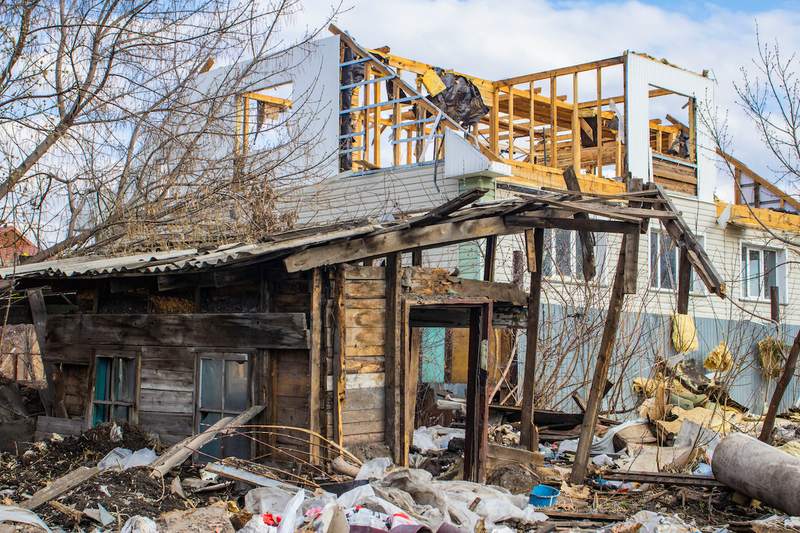If you have a mortgage, your lender requires you to buy homeowners insurance to protect against financial losses from damage to your property. But what if your property is too risky to insure, and you can’t get a policy? That’s where state insurers of last resort and FAIR plans come in.
Key Takeaways:
- Owners of homes in areas at high risk of extreme weather can turn to government-mandated insurers of last resort or FAIR plans if they fail to find private insurance for their property.
- Policies from insurers of last resort typically cost more and cover less than private insurance, but they do help homeowners meet their lenders’ insurance requirements.
- You’ll need to show you’ve been denied coverage before you can get insurance from the insurer of last resort, if there’s one available in your state.
What Is an Insurer of Last Resort?
Insurers of last resort are state-run homeowners insurance policies for properties that private insurance companies refuse to insure. These policies are meant to be the last resort for owners of properties in high-risk areas to get the coverage needed to meet their loan requirements.
More states have established insurers of last resort as extreme weather events have caused insurance claims to skyrocket. Some insurers are no longer willing to cover properties in areas that are increasingly susceptible to frequent wildfires, flooding, and storm damage.
That means homeowners in those areas have no way to meet their loan’s insurance requirements. To protect such properties from foreclosure, many states have passed laws to make insurance available in those areas, often in the form of Fair Access to Insurance Requirements plans — more commonly known as FAIR plans.
These plans have been growing rapidly. For example, Florida’s state insurer of last resort, Citizens Property Insurance, is the state’s biggest home insurer, with more than 1.4 million policies. Between 2018 and 2023, the number of last-resort policies in Florida tripled, and in California, that number doubled. In August 2023, the California Fair Access to Insurance Requirements Plan added 25,000 policyholders — more than three times more than the monthly cap on new policies that Farmers Insurance recently imposed in the state.
FAIR plans defined
FAIR plans are state-mandated property insurance policies made available to homeowners and businesses unable to get coverage on the open market.
FAIR plans are for properties that are considered a higher risk to insure due to their geographic location, age, or type of construction. FAIR plans typically cost more than private insurance plans, and usually only cover catastrophic events. Most FAIR plans include dwelling coverage, with coverage for personal belongings available as an add-on policy. They also differ from standard homeowners insurance by not covering personal liability claims or loss of use.
The first FAIR plans were created in 1968 when Congress passed a law to counter unfair insurance practices in deteriorating urban areas.
Beach and wind plans defined
Seven states offer a counterpart to FAIR plans, called beach and wind or windstorm plans. This type of insurance protects homeowners and businesses against damage from hurricanes and severe windstorms in certain areas. Beach and windstorm plans tend to be geographically limited to coastal properties, and cover damage from storm surges and flooding.
The details of these policies vary significantly from state to state. For example, plans in Alabama and North Carolina include fire damage, and windstorm plans in Florida, Mississippi, South Carolina, and Texas only cover damage from wind and hail.
How Do Insurers of Last Resort Work?
In 2023, 32 states and the District of Columbia offer FAIR plans, many of which are tailored to location-specific risks. For example, California’s FAIR plan covers brush fires, while Georgia’s and New York’s FAIR plans include wind coverage.
FAIR plan rates are set by your state’s department of insurance. Even though insurers of last resort are state-backed plans, they are typically funded through premiums. The state also can issue bonds or use program reserves to provide disaster coverage. If the state collects more funding than is needed for the year, that money goes into a reserve fund to help cover costs from the next big storm or event.
FAIR plans often are used to encourage economic development along coastal areas. As of March 2022, more than 10% of Florida homeowners have coverage through a FAIR plan.
The amount of coverage included will vary depending on the state where you live — though at a minimum, dwelling coverage is usually included. If you also want to insure your personal belongings and other structures on the property, you’ll have to buy policy add-ons. FAIR plans usually don’t offer loss of use and personal liability coverage.
How are state-backed insurance plans funded?
FAIR plans are organized at the state level but backed by private insurance companies that share in the profits and losses. That way, multiple insurance companies share the additional risk. Some states have one state-run plan, while others give you a choice of several plans that are backed by different companies.
How Much Do Policies From Insurers of Last Resort Cost?
The exact cost of a policy from an insurer of last resort will vary depending on your property and state. In California, FAIR insurance typically costs around $3,200 per year, while Florida homeowners pay an average of $4,069 per year for a FAIR plan.
Generally speaking, you can expect these policies to cost more than a standard homeowners insurance policy. If state-managed insurers of last resort cost the same as private insurance, then it would create unfair competition.
How Do I Get a Policy From an Insurer of Last Resort?
The first step is to determine whether your state offers a FAIR plan. Each state has different eligibility requirements, but you can use this directory to find the phone number for your state’s insurance department to learn more. You’ll be able to complete the application and apply for a FAIR plan either directly or through an insurance agent or broker.
Here are some general requirements you can expect, depending on your state:
- Proof that at least two insurers have denied you coverage.
- The property can’t be in violation of any building, housing, or health codes.
- The property can’t have any outstanding taxes, liens, penalties, or assessments.
- You’ll need to reapply for coverage every two years.
You’ll also need to make improvements to limit the risk of fire, theft, or water damage to your property. If you don’t take certain steps to make your home less susceptible to damage, then the FAIR plan administrator might not approve you for coverage.
States with insurance of last resort
Here’s a list of states that offer FAIR plans, and relevant contact information:
States With Insurance of Last Resort
FAQ: State Insurers of Last Resort
Here are answers to common questions about state insurers of last resort.
State insurers of last resort cover homeowners unable to get insurance on the private market. Guaranty funds also are managed at the state level. However, the key difference is that guaranty funds are more like reserve funds that help cover homeowners in the event that their private insurer fails.
If you’re unable to get coverage from an insurer of last resort, you should talk to the insurer that previously insured your home or currently insures your car. Find out if the problem is the home’s location, age, or condition. Ask what improvements you could make so your home would be less vulnerable to disaster or extreme weather, and more insurable.
You also can consult the Insurance Institute for Business & Home Safety for ways to protect your home from damage, or contact your state’s insurance department using this directory.
If all else fails and you’re unable to get a policy, then your lender likely will purchase what is known as force-placed coverage and send you the bill. Force-placed insurance only protects the lender and is often more expensive than a standard policy.
The Bottom Line on State Insurers of Last Resort
Insurers of last resort are state-managed insurance policies that cover properties that are uninsurable on the private market. Typically, these policies come in the form of FAIR plans, cost more than private insurance, and offer less coverage. However, as extreme weather events become more frequent and widespread, more insurers have dropped customers and raised rates in vulnerable areas. FAIR plans may not be a homeowner’s first choice, but they can wind up being your last resort for protection against serious financial loss from damage to your home.






